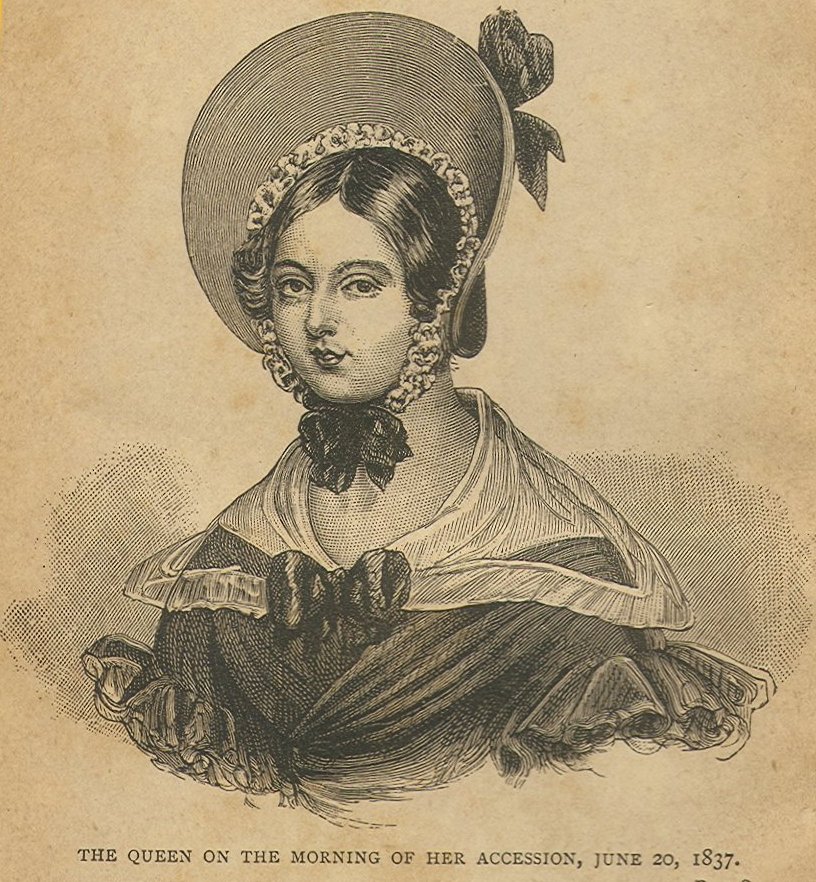User:Judyy11/sandbox
Queen Victoria’s given name was Alexandrina Victoria. She was an only child of Edward Duke of Kent in marriage (the 5th child and air succession to the English throne), and Princess Victoria of SaxeCoburg-Saalfed (a German Princess). However, Queen Victoria indeed had a half-brother and half-sister from her mother’s first marriage. Victoria proposed to her cousin Prince Albert on October 15, 1839, and they got married February 10, 1840. She and Albert bore their first child in 1840 shortly after their marriage. They went on to have four sons and five daughters who ensued different European thrones. Prince Albert’s original name was Francis Albert Augustus Charles Emmanuel, Prince of Saxe-Coburg-Gotha. Her first marriage was to Prince Albert. Queen Victoria’s reign began 1837 and ended at her passing in 1901. Her life’s journey began at birth in London, England, on May 24, 1819, which later ended on January 22, 1901. She was the crowned Queen of England and Ireland, as well as the Empress of India.
Young Victoria likelihood of wearing the crown was certainly unexpected. Because her own father Duke Edward was fifth in line to rule. Therefore, Queen Victoria ascended the throne after her Uncle King William of England passed on. Therefore, leaving her to rule after him being the first in line to inherit the throne and bloodline therefore since King Willian IV had no surviving children. It was during a history lesson at the tender age of 10 in Kensington Palace, when Victoria became conversant of her claim to the throne. During that announcement, she indeed took the news gracefully. She stated, “I will be good”, confident in her capabilities. Queen Victoria ruled Britain at the peak of the Nation’s prosperity, and influence. This coined period in time became known as “The Victorian Age”. Her values as a sovereign reflected her role as a wife, mother, and later on, as a grandmother. Queen Victoria was a caretaker whose power remained in her whim. Victoria’s time as Sovereign was spontaneous, motherly, poised and controlled. Prince Albert was her closest advisor over time and dearest friend in life. This time of transition under her rule challenged the status quo in human rights with more reforms. Queen Victoria reign was almost motherly over her subjects, therefore, power and prosperity was given within regard for the crown. She ruled much like an involved mother with her heirs, in a sense, denying some and approving others.
Queen Victoria certainly did not hesitate to gently reprove even near kin or informants whose advice was uninvited. Those who crossed her provided accolades were told. Her character was perceived as “inflexible”, yet charming in nature. She received her crowning as a young woman at 18-years-old June 20, 1837. Which continued until Prince Albert her cousin and her were wed. Her interactive role as wife led them to mature in trust, as she cultivated his role to flourish in decision-making. Even allowing Prince Albert to perform decrees of an edict, and decide what his wife attire would be. However, she remained head of state, and Britain’s Queen remained selective with her trust throughout her life. Queen Victoria believed in her own power and resented any who pressure her to relinquish her rights to an adjunct, perceiving in many ways her subjects as her own children, no matter age, color, or race.
Queen Victoria indeed, from a dutiful sense of leadership and honorable faith ruled. Her nurturing, but strict nature ruled her often in a pursuit to “be good”. So, she allowed reforms in parliament for the people. Victoria had a physician named Sir Henry Holland, who said with glee on terms when speaking of the times of the Victorian Age calling it “an age of transition, a period when changes, deeply and permanently affecting the whole condition of mankind, are occurring more rapidly, as well as extensively, than at any prior time in human history.” The public seemed mostly approving of her rule. Though some were less than pleased with her decisions. Which included a young man who attempted to kill her. By the name of Edward Oxford, a young 18-year-old who was possibly disturbed. But clearly a violent individual, who indeed failed his attempt on the Queen’s life. The public seemed mostly approving of her rule.
Though Queen Victoria took upon the challenges of leadership and ruled she did so with poise. With her directive, the Victorian age held advancements in science and technology, as well as much political, social, and legal reforms. It was the height of the Victorian Age and English sovereignty globally. Though a Sovereign who constantly faced power pushes, Queen Victoria was a beloved ruler, wife, and mother. Since she was the last of the House of Hanover, this spunky Queen was an example in motion to some modern policies held. She was the starting point that changed reform in Britain that continued to hold grown. Even when it was clear she would have attempts from those who would try to rule for her. On January 22, 1901, Queen Victory left her throne to her and Prince Albert’s firstborn Edward VII when she died.
 King Edward VII and Queen Victoria
Resource References:
King Edward VII and Queen Victoria
Resource References:
Alexander, Christine, and Margaret Smith. "Victoria, Queen." In The Oxford Companion to the Brontës. : Oxford University Press,, 2006. http://www.oxfordreference.com.ezproxy.liberty.edu/view/10.1093/acref/9780198662181.001.0001/acref-9780198662181-e-1137.
Williams, Edgar T., and Meredith Veldman. Victoria. Encyclopedia Britannica, Inc, June 2018. https://www.britannica.com/biography/Victoria-queen-of-United-Kingdom.
Schomp, Virginia. Life in Victorian England Victoria and Her Court. Gale Virtual Reference Library. September 2018. https://go.galegroup.com/ps/pdfViewer?resultListType=RELATED_DOCUMENT&c2c=true&docId=GALE%7CCX3323400001&userGroupName=gvrl_catalog&inPS=true&contentSegment=&prodId=GVRL&isETOC=true#content.
Albert, Prince Consort. The Editors of Encyclopedia Britannica. Encyclopædia Britannica. August 2018. https://www.britannica.com/biography/Albert-Prince-Consort. (Royal History Blog, s.v. “Queen Victoria's Half-Sister and Half Brother,” accessed September 20, 2018, https://royalhistoryblog.wordpress.com/2015/12/07/queen-victorias-half-sister-half-brother/)
“Queen Victoria's reign,” Video Encyclopædia Britannica, 2:16 accessed September 2018, https://www.britannica.com/biography/Victoria-queen-of-United-Kingdom/media/627603/193686



